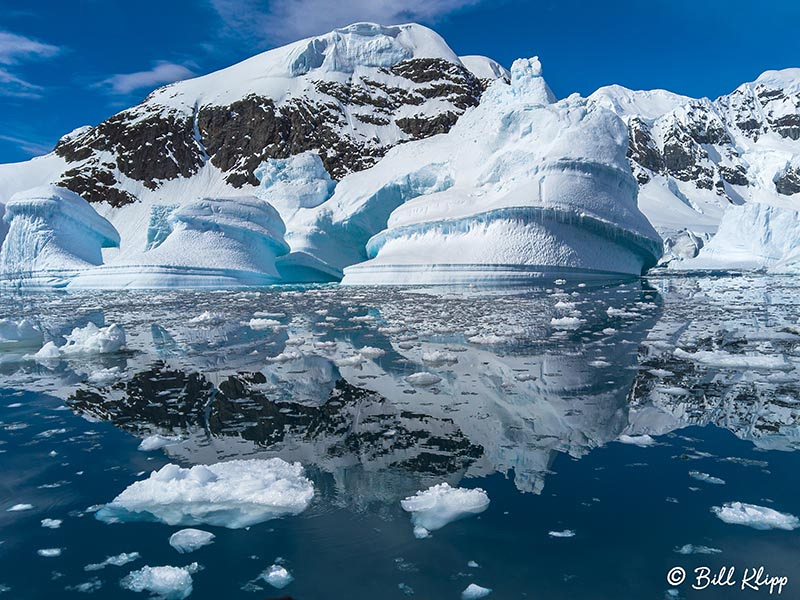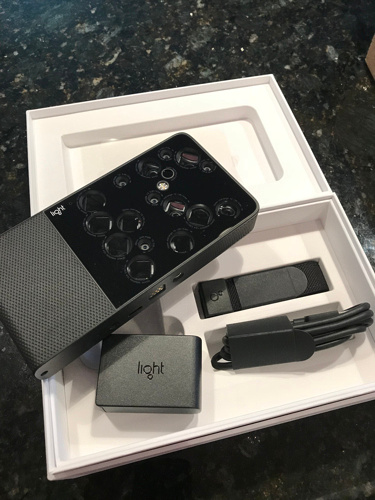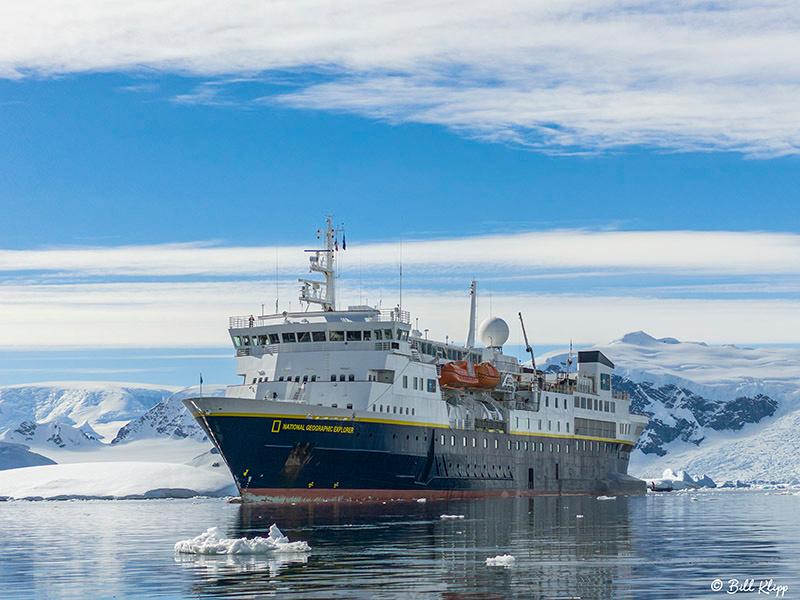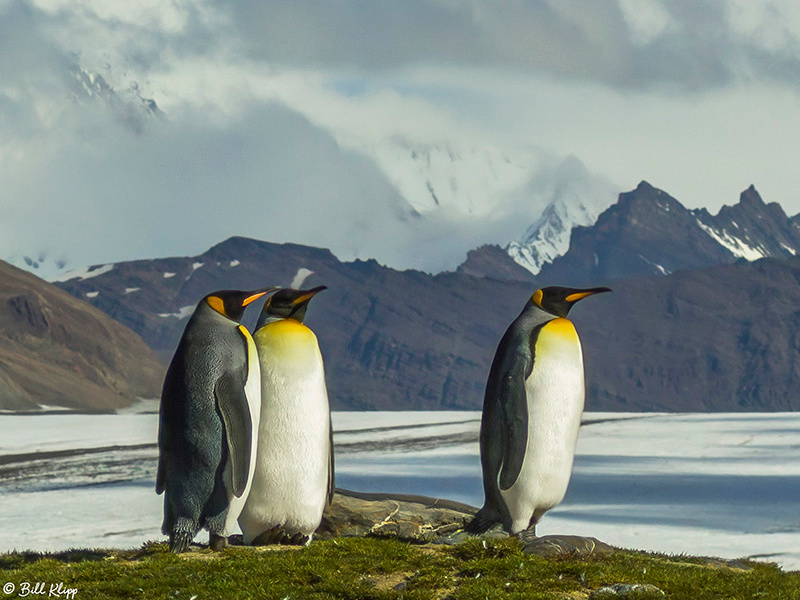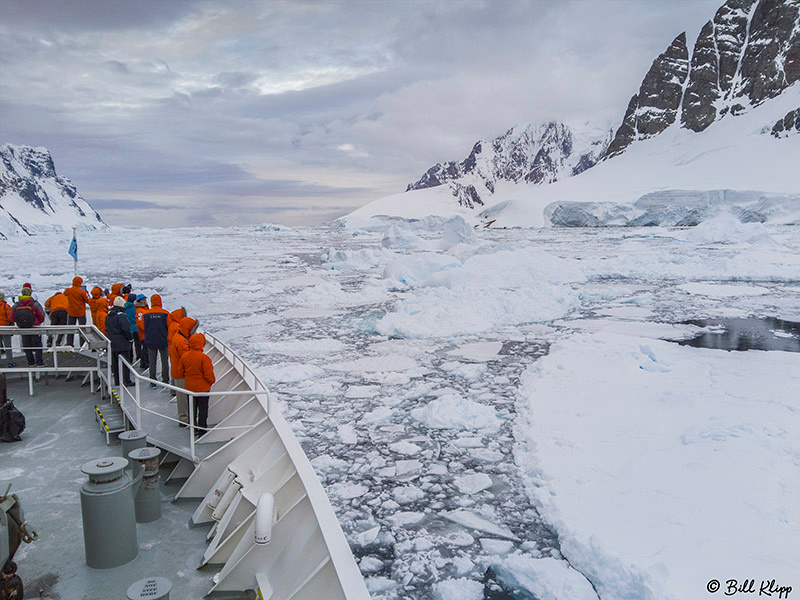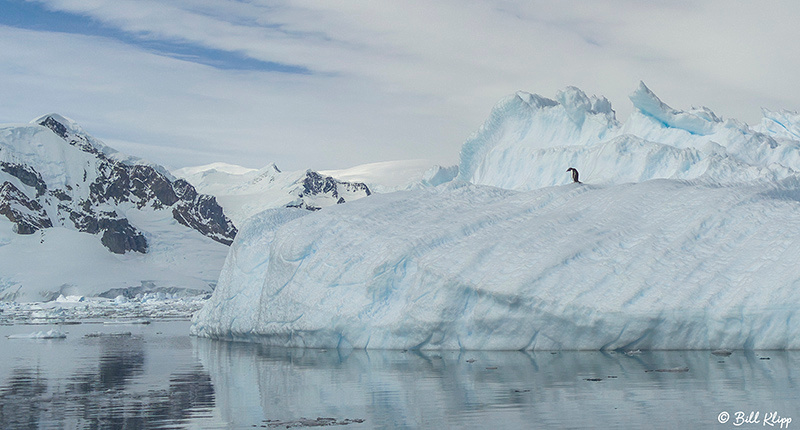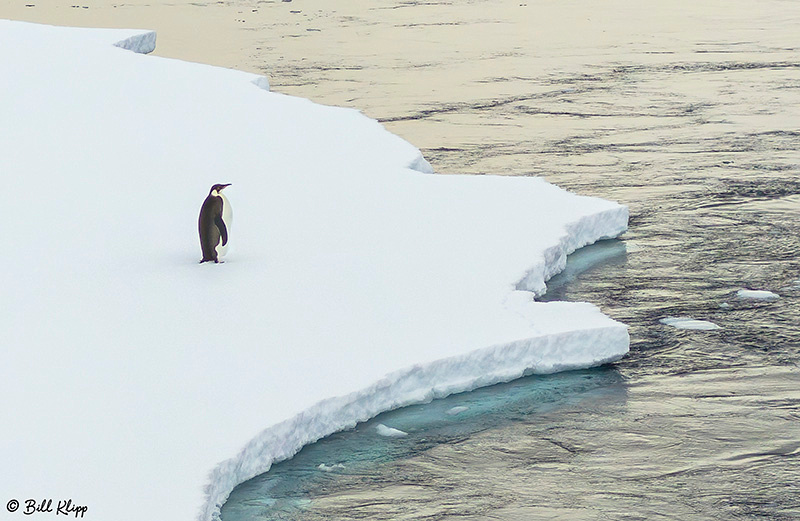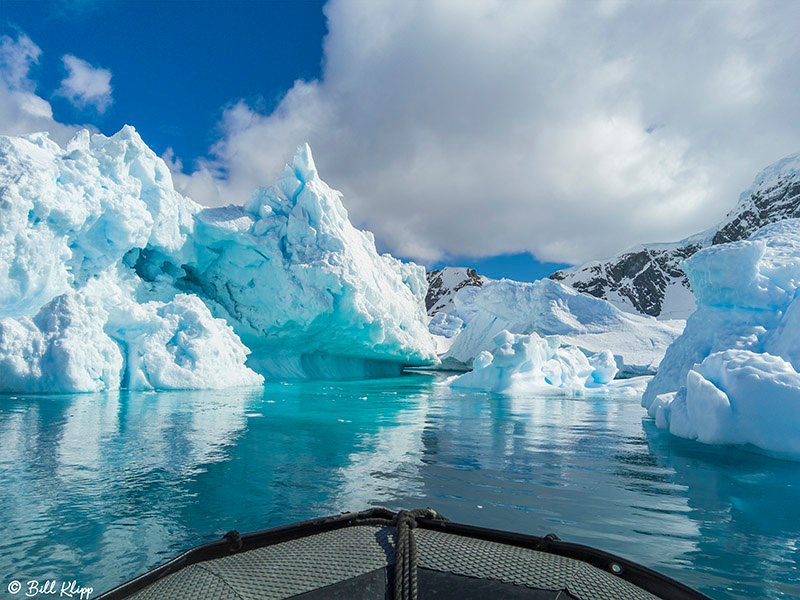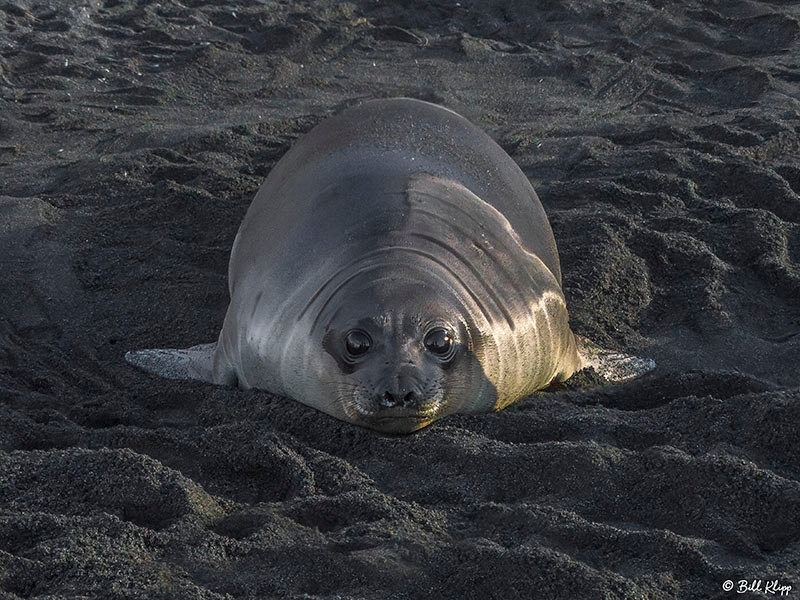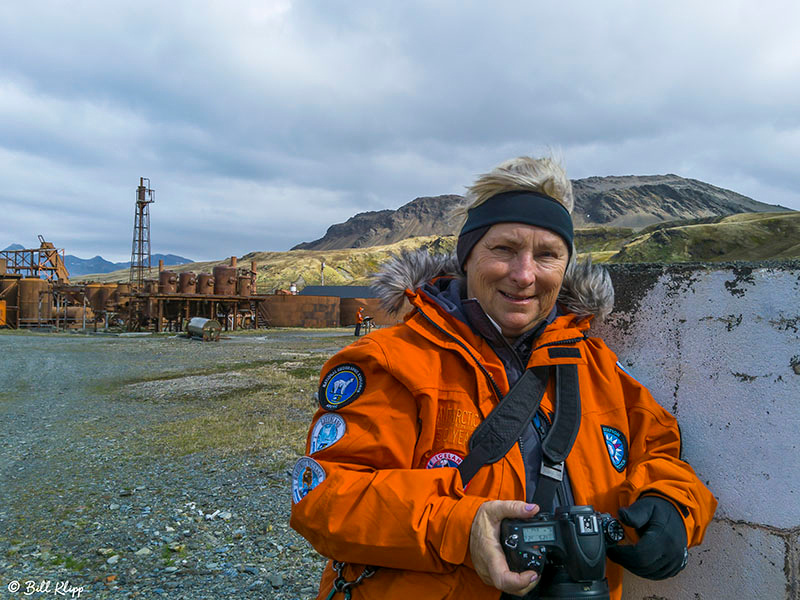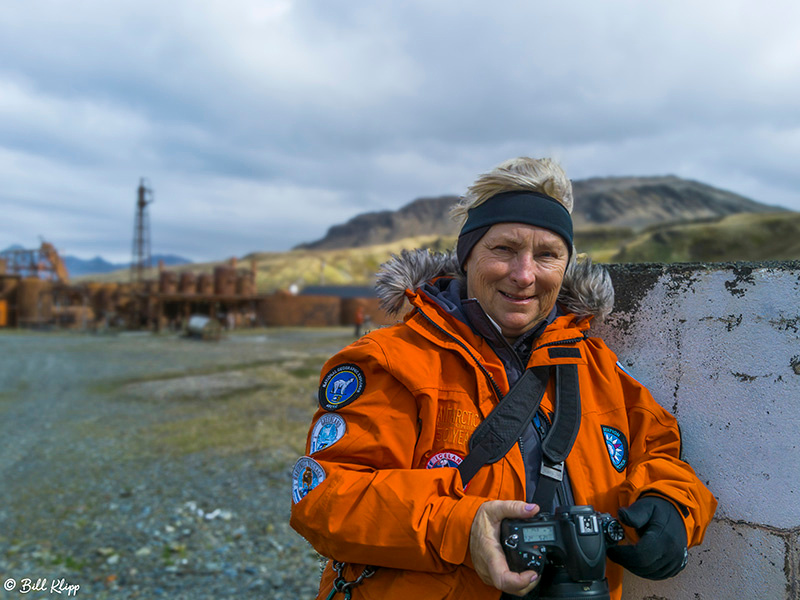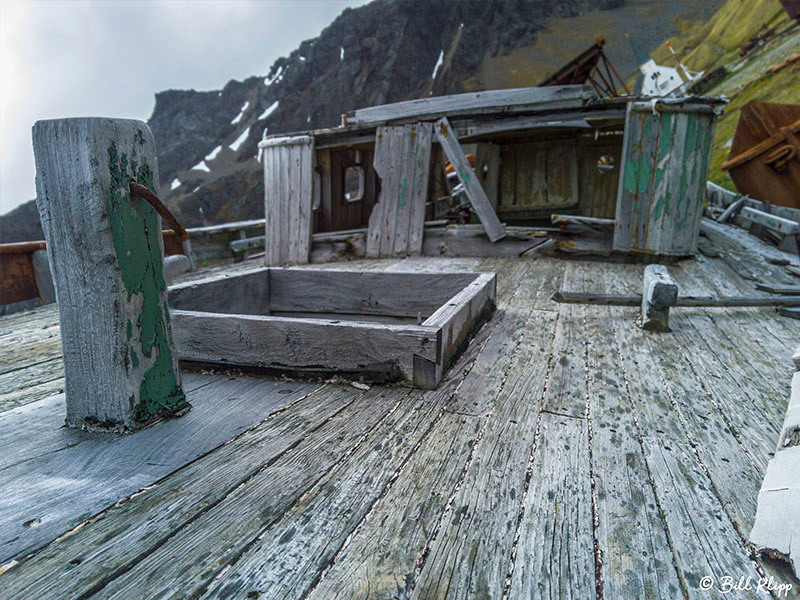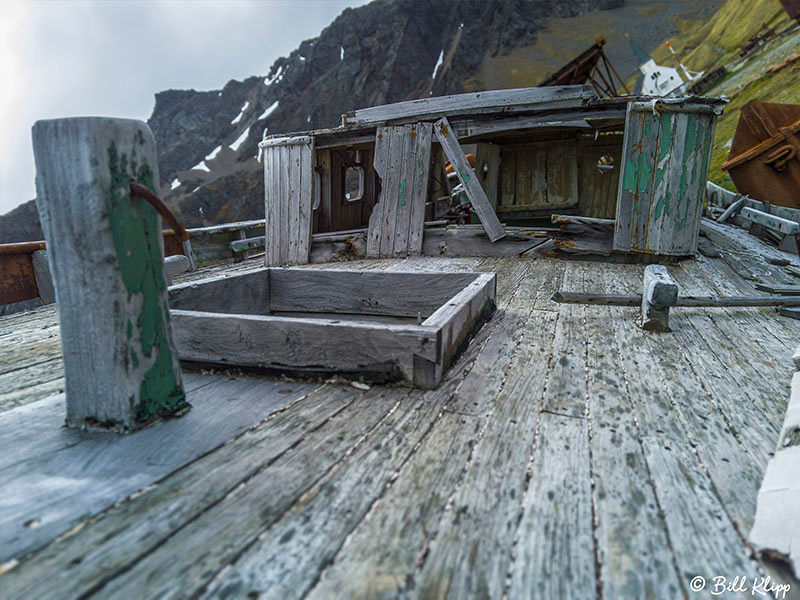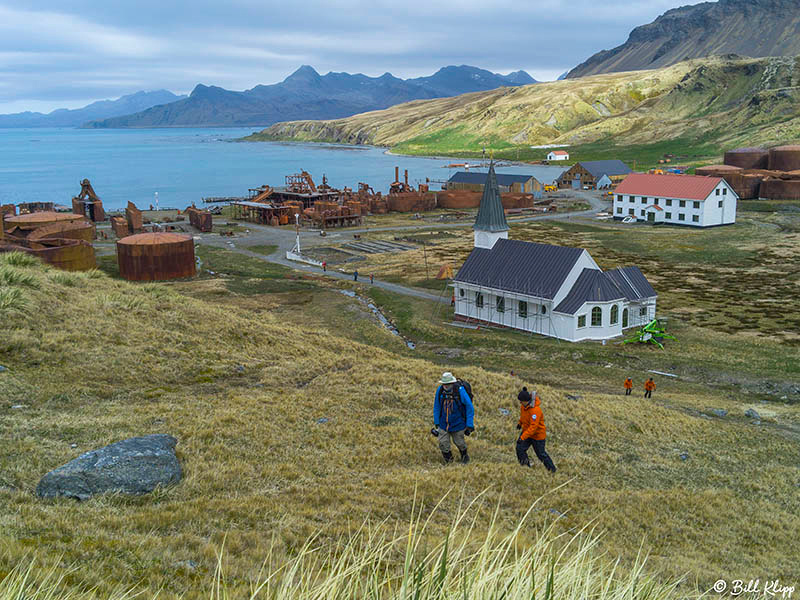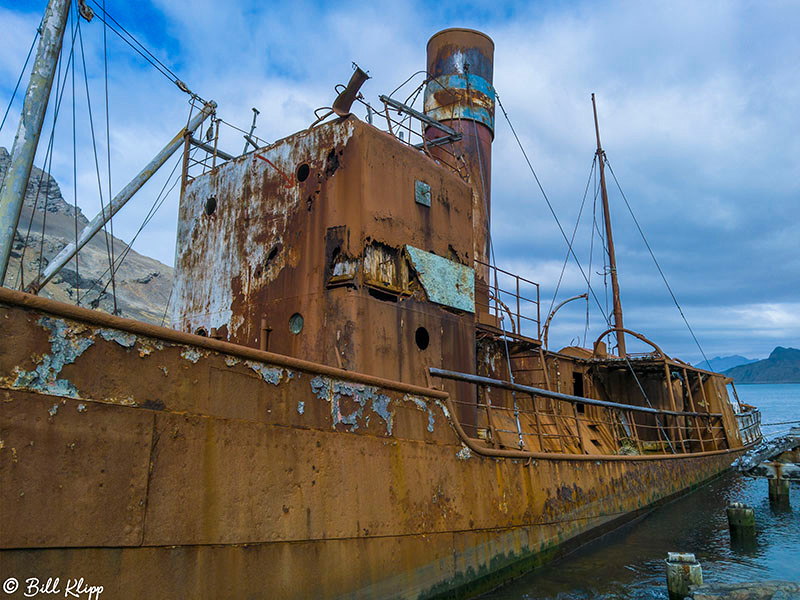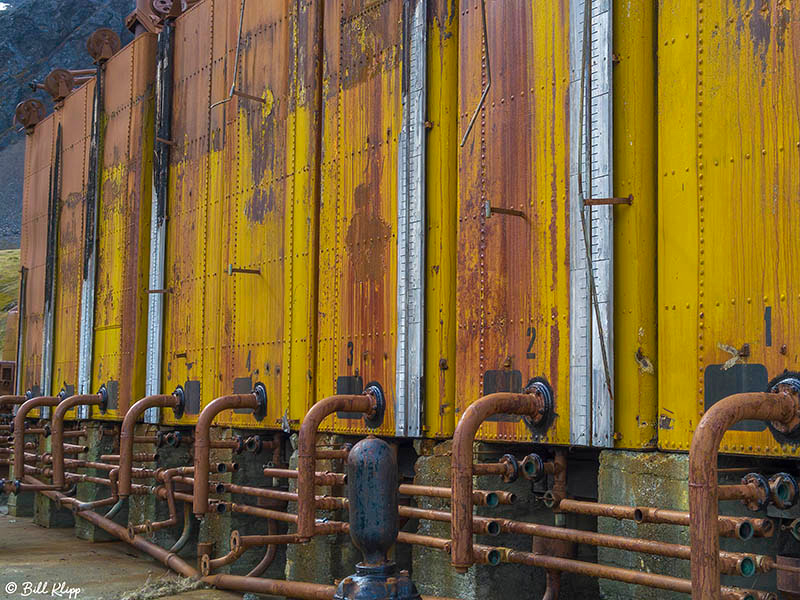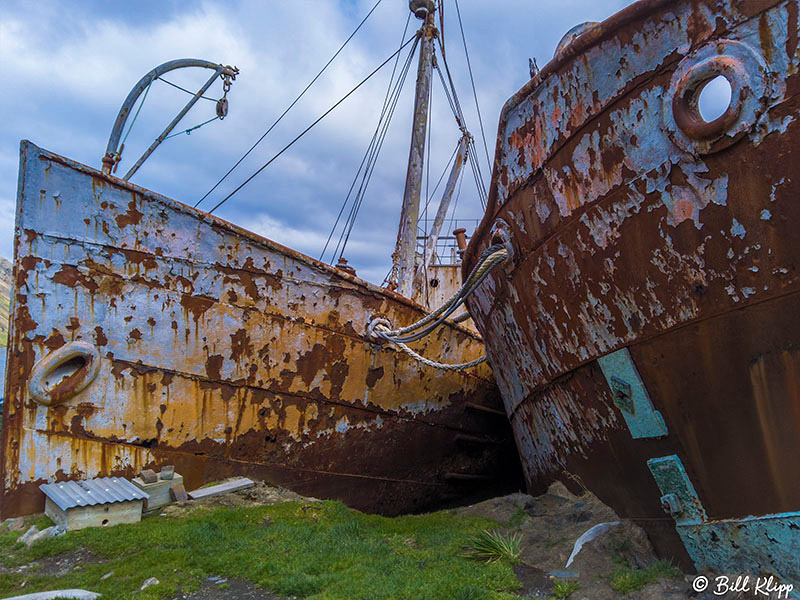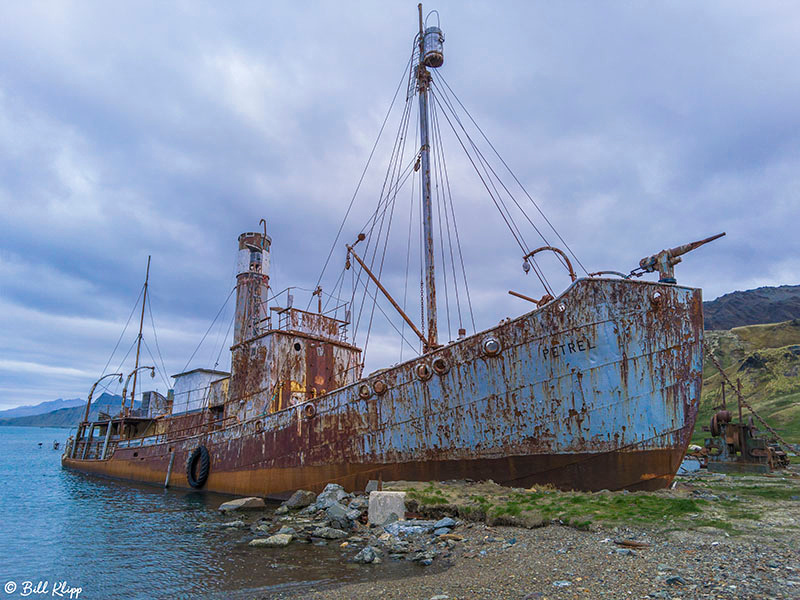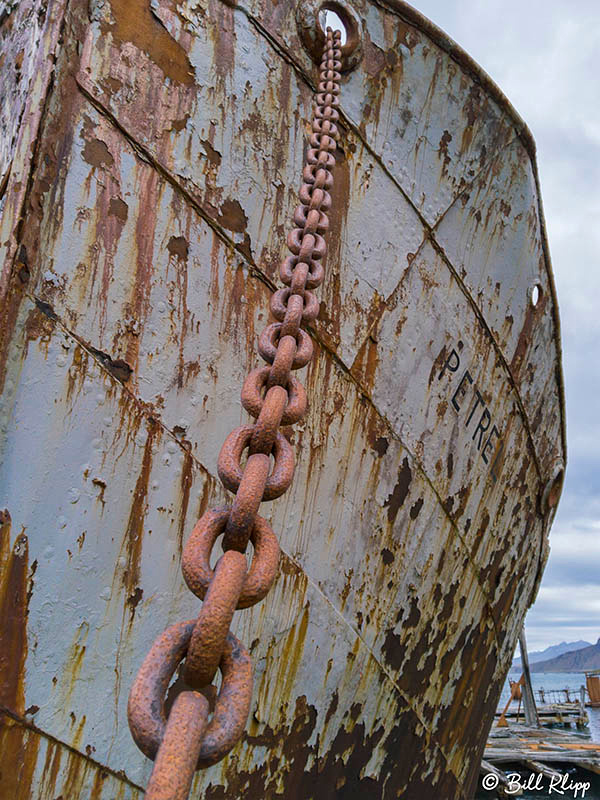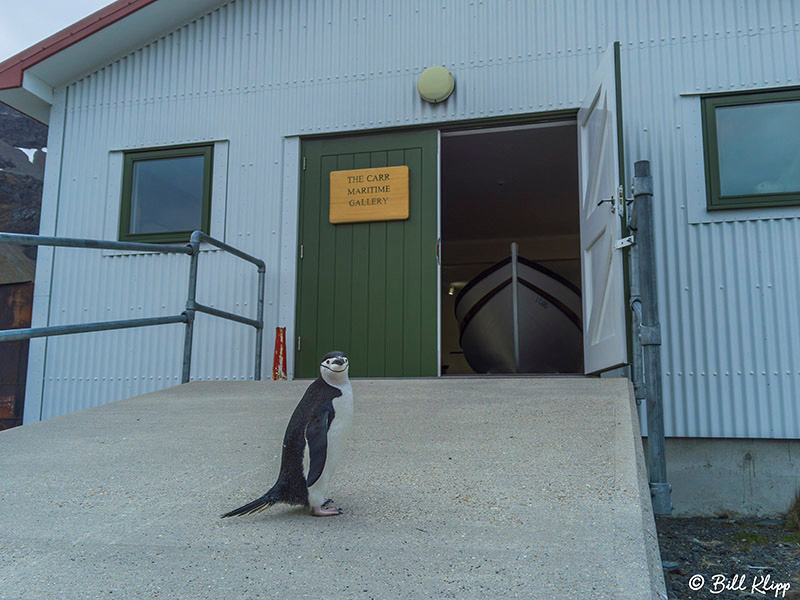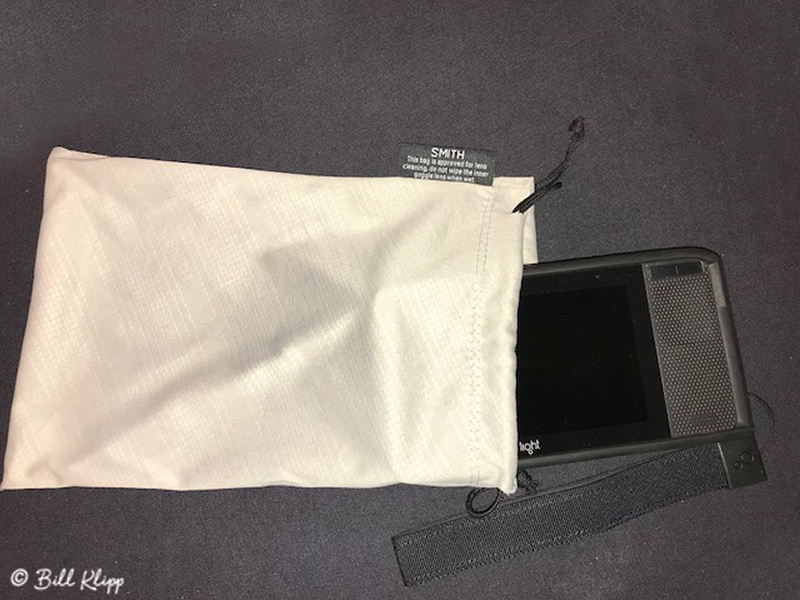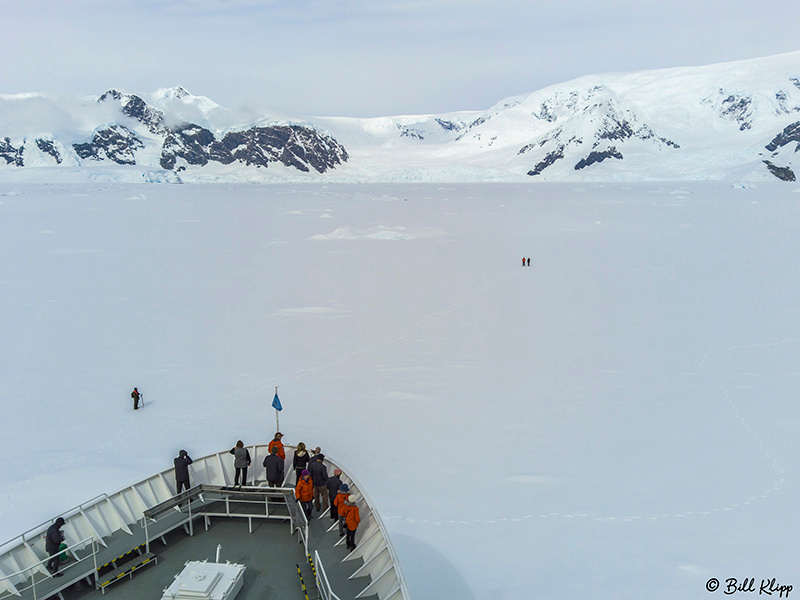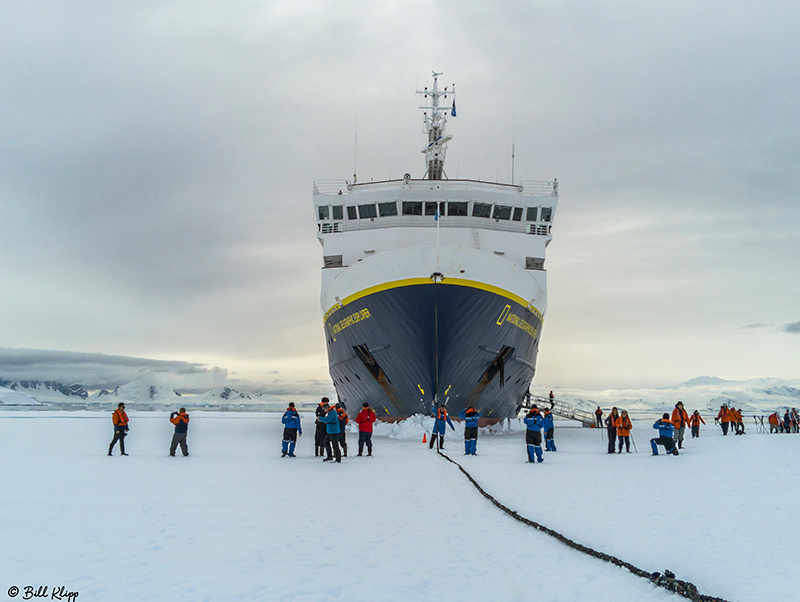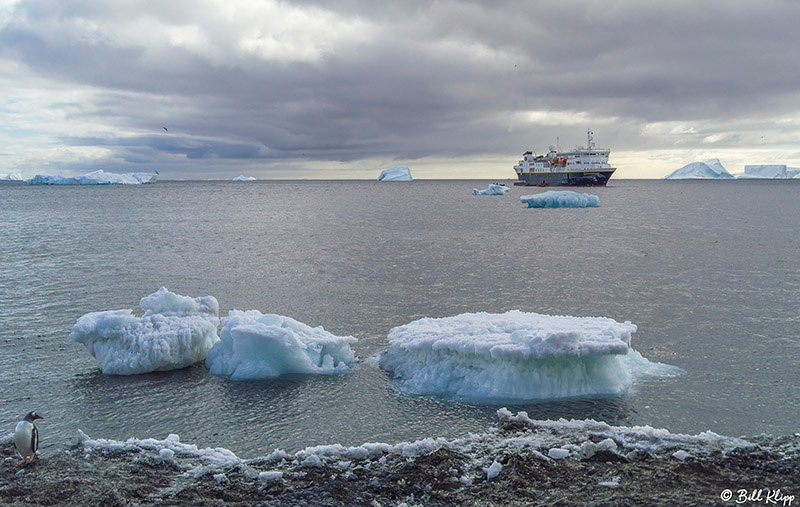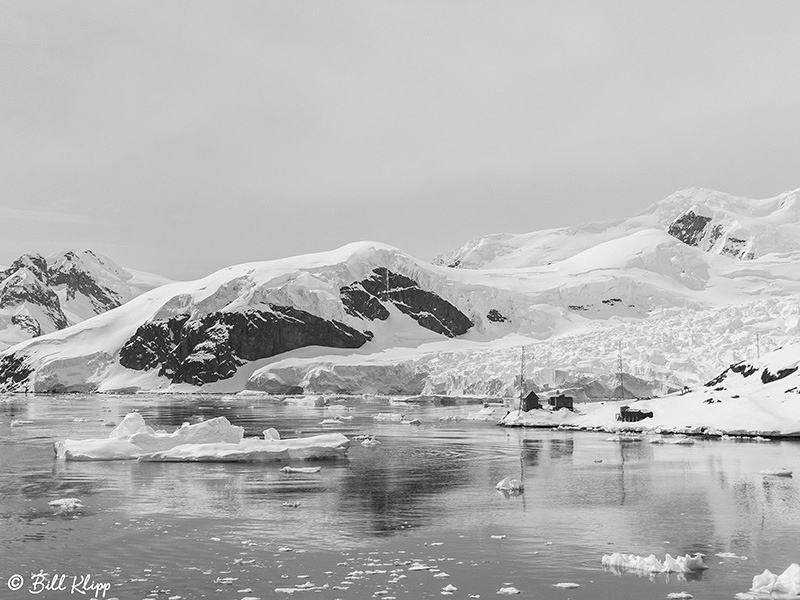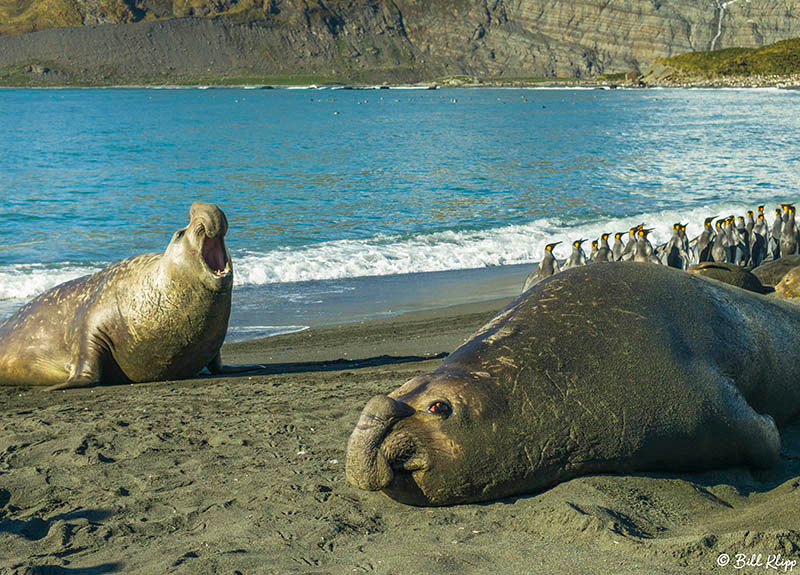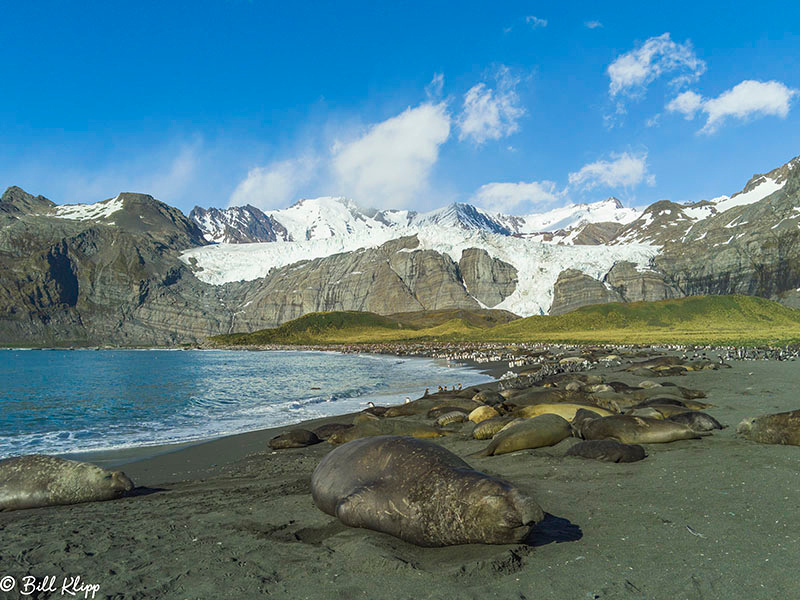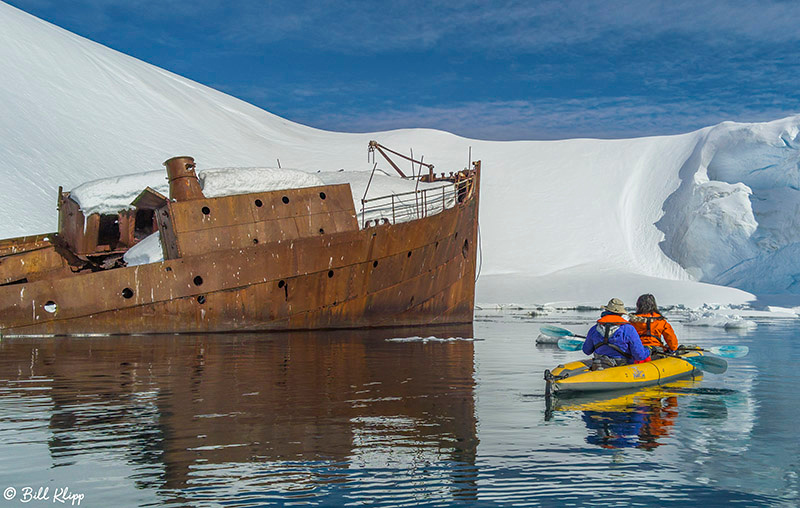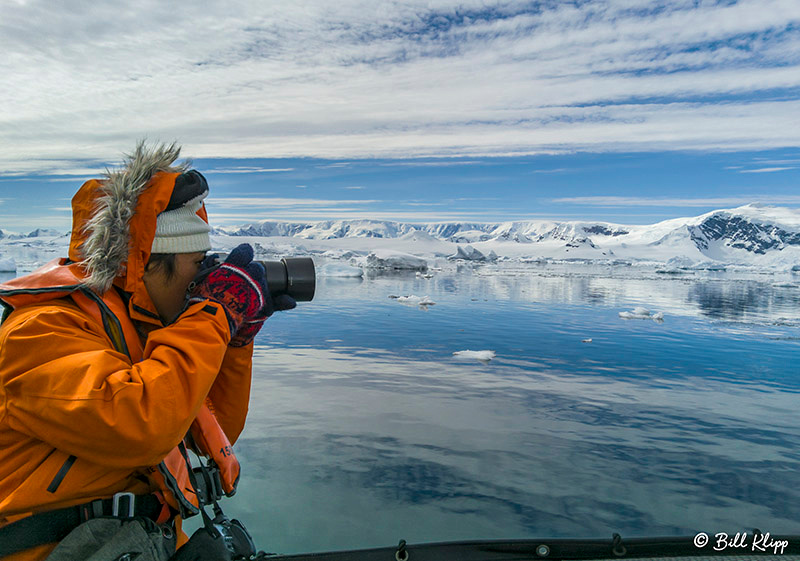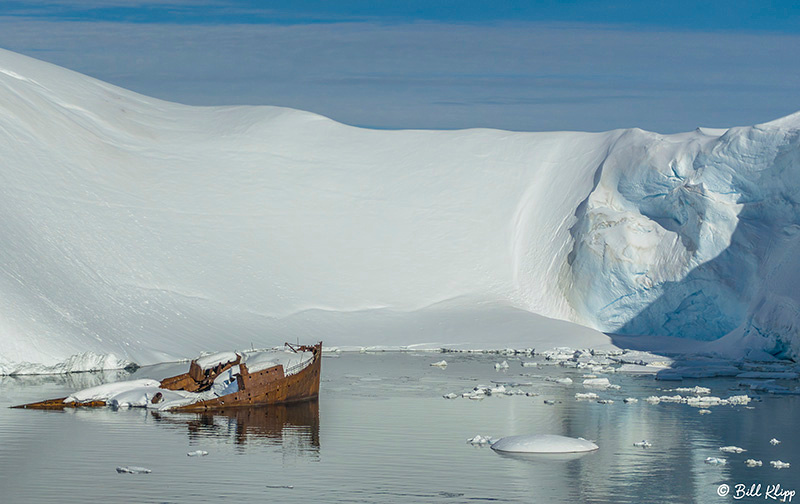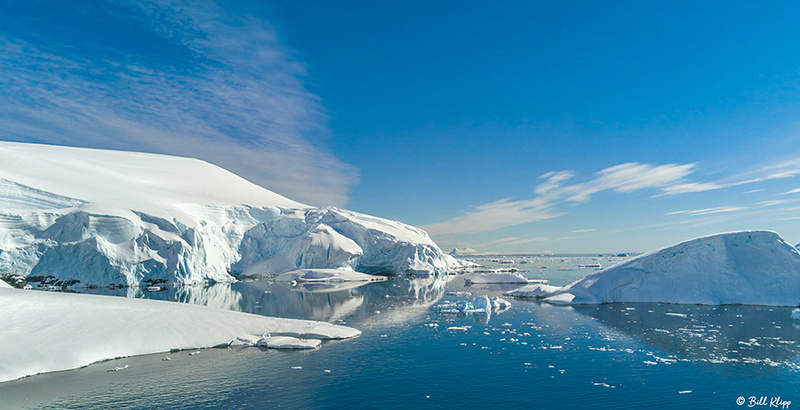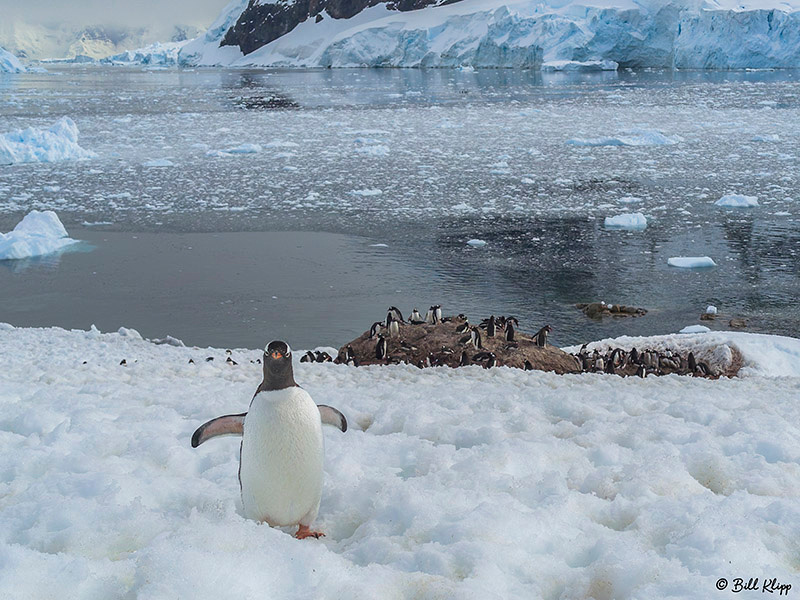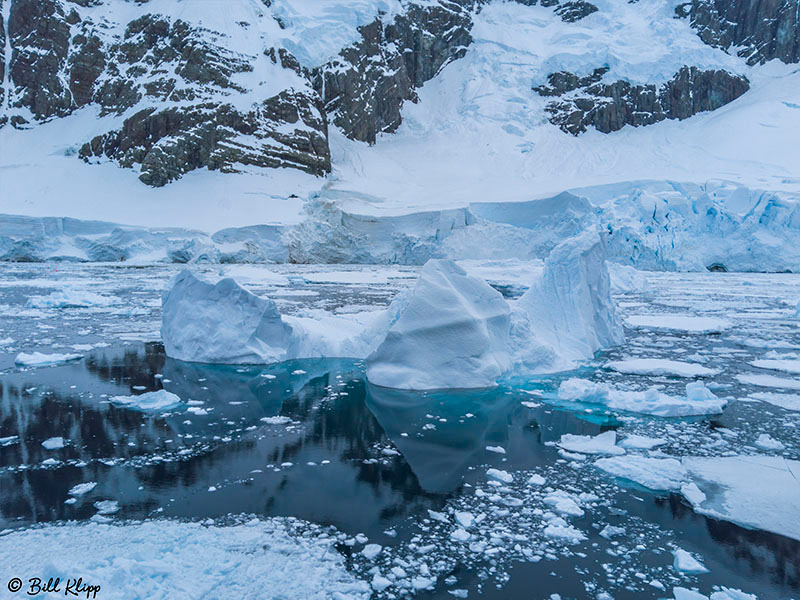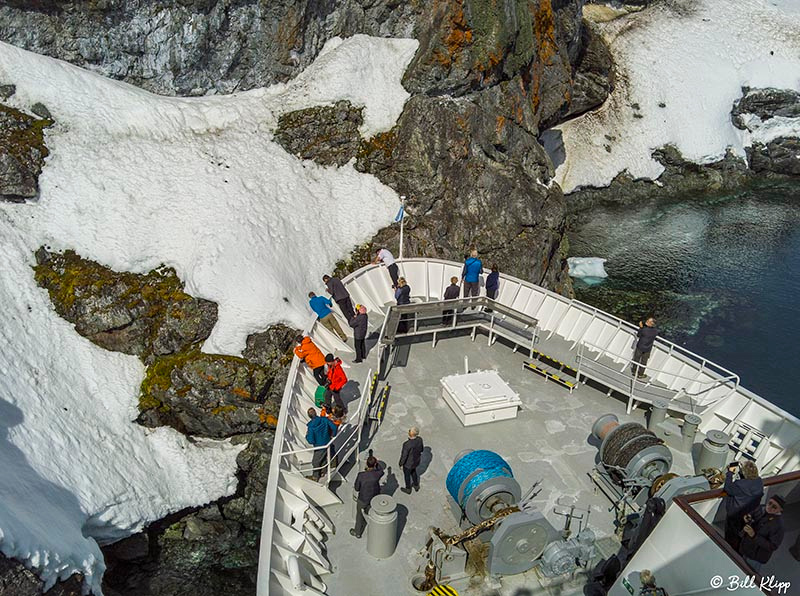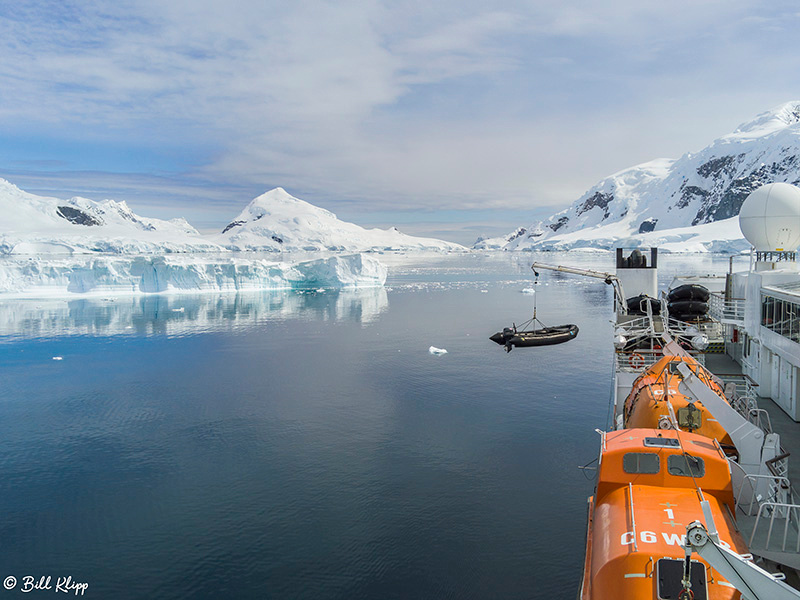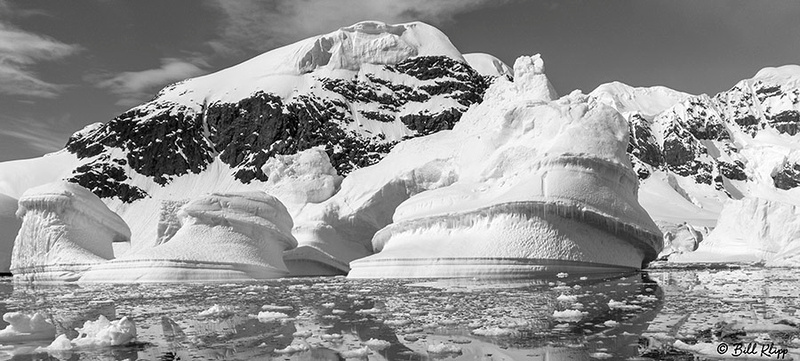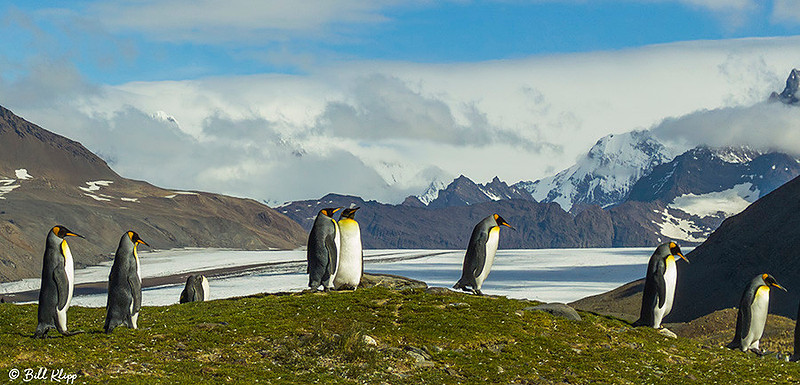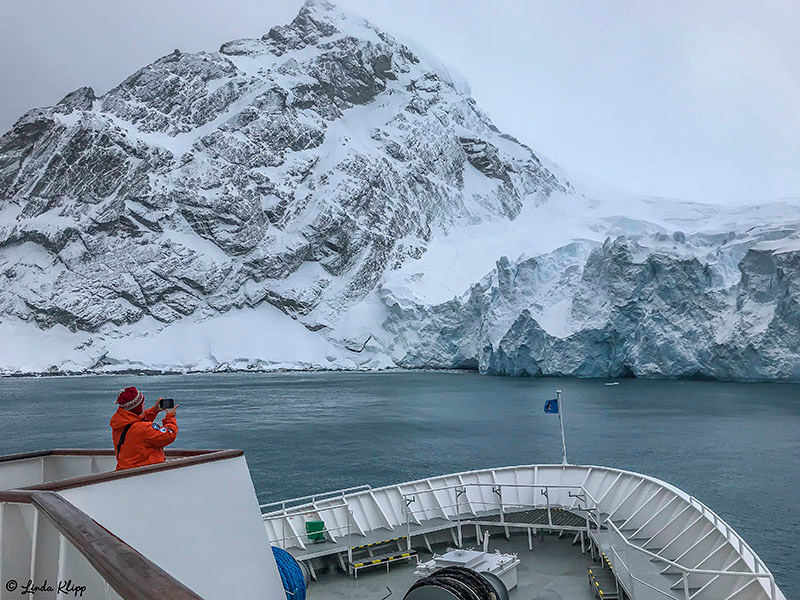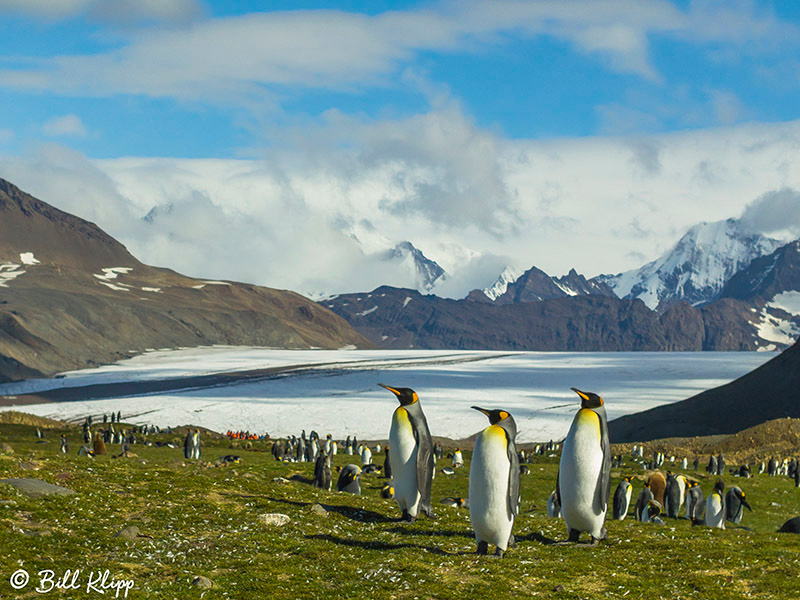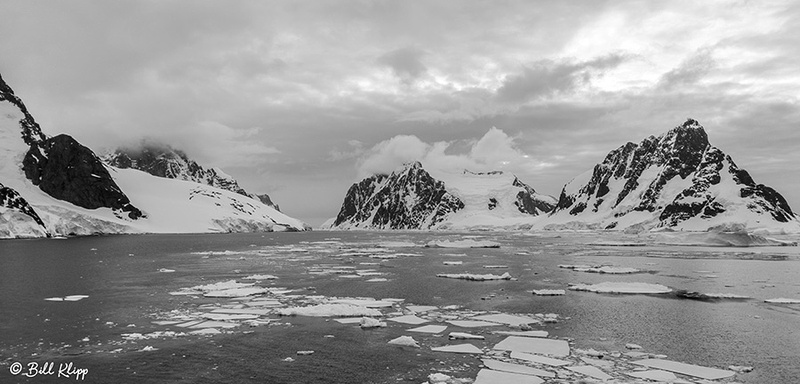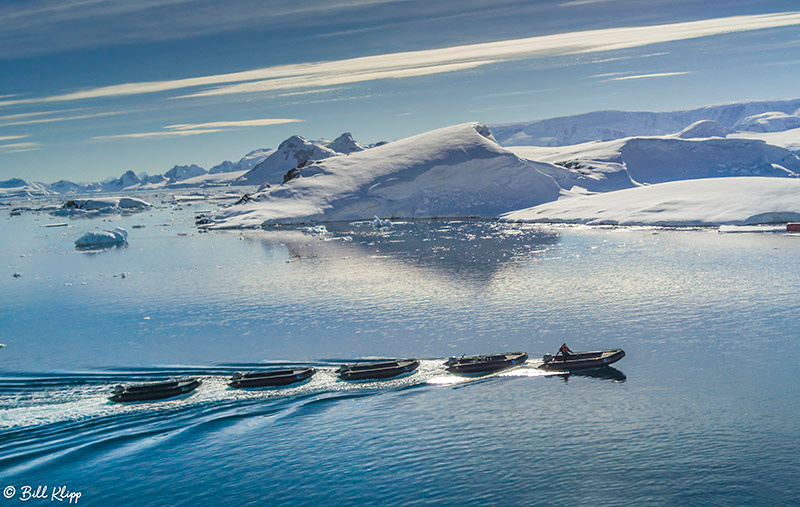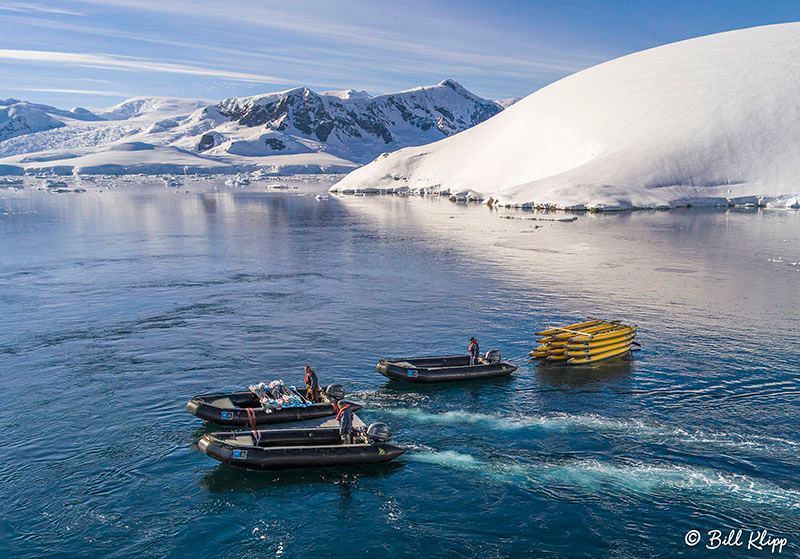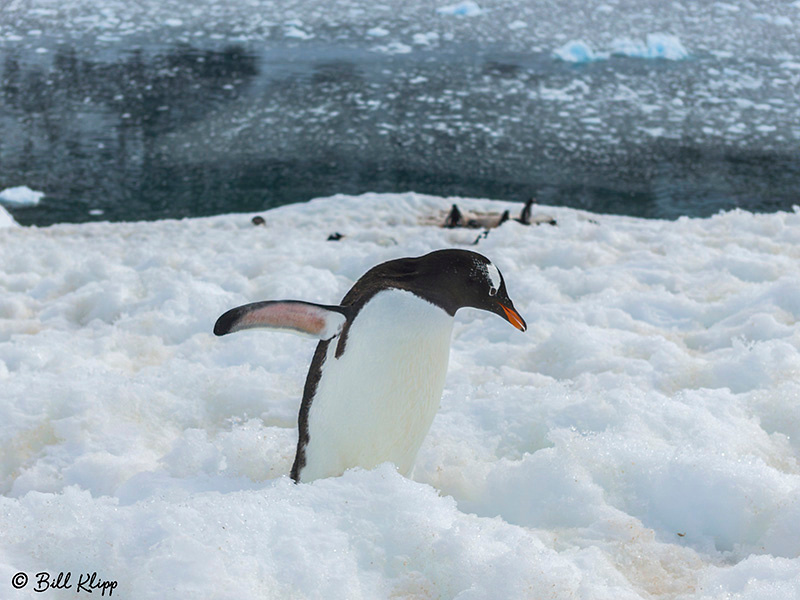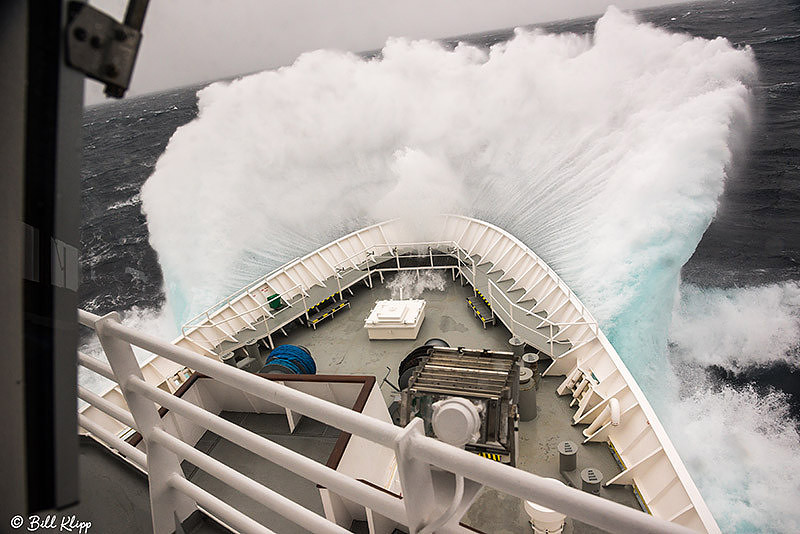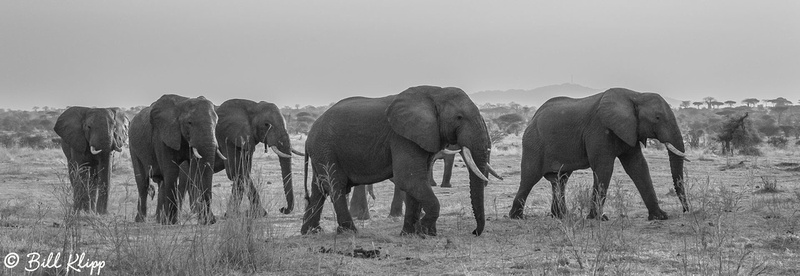


Antarctica Wanderings I – Nov 2017 --- “L16 Light Camera in Antarctica”
(Part I of our recent Wanderings in the Falkland Islands, South Georgia Island and Antarctica) All photos in this blog were shot with the L16 Light Camera
I was very excited when UPS delivered a package in early Nov that I had been anticipating for just over 2 years. In it was my new L16 Light Camera and it arrived a week before we were headed down to the Falkland Islands, remote South Georgia Island and Antarctica for a 3+ week Photo Expedition. On the trip I took over 8,000 images of which 500 were on the L16 and the L16 performed generally very well although with some limitations. This Blog is part I of my Antarctic Wanderings trip Blog and Focuses (pun intended) on the revolutionary L16 Light Camera.
So some might ask what is a L16 Light Camera? It’s basically the first multi-aperture computational pocket camera. Which means the camera has 16 different lenses (and 16 individual sensors ) each with varying focal lengths. Given the array of lenses with different focal lengths the camera has a 5x optical zoom from 28mm to 150mm. The camera uses sophisticated algorisms to combine multiple exposures into a single high-resolution image equivalent to a 52 megapixel camera. It produces Jpegs and very high res huge DNG raw files (up to 200mbs each). Although the camera has 256 gigs of internal solid state memory, I guess it's time for more hard drive space. With multiple sensors it handles low light well and amazingly allows for changes of depth of field and focusing point after the fact in post. This is obviously Version 1.0, but since the camera has wifi and is software driven the company has been frequently pumping out updates with new features. Image workflow is a bit more complicated and cumbersome since you must first download photos from the Camera into a propriety software program called Lumen. This is where the magic occurs. Lumen stitches, fuses or overlays images from 10+ lenses using sophisticated algorisms to create a single very high-resolution image. The program also has other basic photo editing features such as exposure, saturation, contrast and other controls. You can then export a Jpeg or huge DNG raw file to Adobe Lightroom, Photoshop or other 3rd party photo editing program for final adjustments (https://light.co/technology ).
The L16 Light Camera was used for all photos in this blog, notice the 16 separate lenses
Our home while on the trip, the National Geographic Explorer, Enterprise Islands, Antarctica L16 --- 75mm, ISO113, f15, 1/8,000sec, +.3evs, handheld
Majestic King Penguins, Fortuna Bay, South Georgia Island L16 --- 150mm, ISO101, f7, 1/6,000sec, +.0evs, handheld
National Geographic Explorer navigates thru the Lemaire Channel, Antarctica L16 --- 28mm, ISO104, f15, 1/40sec, +.75evs, handheld
Adelie Penguin, Enterprise Islands, Antarctica L16 --- 34mm, ISO106, f14, 1/7,100sec, +.3evs, handheld
This would be our 3rd trip down to the ICE and the Great White Continent. Talk about good timing, I'm glad I had a week to play with my new adult toy before we hit the high seas for some serious wildlife and nature photography. My hope as you read my trip Blog you might find some helpful L16 tips and the Light Company might find some helpful product development ideas.
Emperor Penguin, Wilhelmina Bay, Antarctica L16 --- 150mm, ISO105, f12, 1/2,600sec, +.75evs, handheld
Icebergs Danco Island, Antarctica L16 --- 28mm, ISO107, f15, 1/6,000sec, +.75evs, handheld
Elephant Island pano, Where Ernest Shackleton's Expedition landed. Image stitched with four L16 488mb photos which pushed the limits of my computer's processing capability L16 --- 28mm, ISO100, f15, 1/2,200sec, +.00evs, handheld
Southern Elephant Seal pup, South Georgia Island L16 --- 35mm, ISO320, f7, 1/2,500sec, +.0evs, handheld
By way of background my wife and I have been very serious wildlife photographers for about 20 years. We spend 3-4 months a year on photo expeditions to places like Africa, Alaska, Arctic, Galapagos, Baja, Central & South America and Antarctica to name a few. We are Nikon shooters and my current weapons of choice are a Nikon D5, D4 and D750. We also always carry what I like to call a pocket camera such as a Nikon mirrorless V1 or Coolpix P7700 to use when we don’t want to lug around the heavy artillery. When I first read about the L16 Light Camera back in 2015 I had no illusion that it would replace my top of the line pro-level DSLR. I rather thought it would be the ultimate pocket camera retiring the advanced compact cameras we also use and as a major step up from a smart phone. I was attracted by the high resolution, low light potential and optical zoom range. I never believed and my 3 week field test in Antarctica confirmed that such a device no matter how sophisticated could replace a pro DSLR with good glass, but for me that was never the objective or expectation. As a wildlife photographer my primary camera needs are: Focusing speed, shooting speed (FPS), low light performance, resolution and almost most importantly a user interface that allows me to instantly change camera settings using just muscle memory. My Nikon D5 delivers all that and more at 12fps, ISO capability up to a ridiculous 3million, 4k video and a form factor with lots of external buttons and dials to quickly access and adjust camera settings. Any camera which requires menu surfing to change settings does not work for action photography such as sports or wildlife. Unfortunately its this last factor of buttons and dials which ultimately results in a bulky heavy piece of equipment. The L16 is a menu driven device, with virtually no physical buttons / dials, minimal camera controls, slow to startup, slow to shoot, no video (currently) and minimal camera shooting info / feedback (ie playback histograms). As a result its currently not a very good camera for action photography. Never the less as you will see from some of my images that with a variable resolution of up to 52 megapixels, optical zoom from 28-150mm and good low light performance it is pretty awesome for landscape, portrait and other types of photography. Add with the ability to modify depth of field (from f15 to f2) and focusing point after the fact in post this device is just amazing. So while not a DSLR killer this is truly a revolutionary step in still photography and this is just camera version 1.0.
Grytviken Whaling Station, South Georgia Island This image and next are same image processed in Lumen at f15 for front to back sharpness then next at f2 to soften background. I then brought it into Lightroom for some basic raw file processing. L16 --- 28mm, ISO100, f15, 1/2,200sec, +.0evs, handheld
Notice background softness when the same image is processed in Lumen at f2 (vsf15) with focus point on face and the same basic processing in Lightroom.
Grytviken Whaling Station, South Georgia Island Focus point on foreground wooden post in Lumen to reduce depth of field in background. The same photo is below but with the focus point shifted to the background structure L16 --- 28mm, ISO101, f4.8, 1/1,150sec, +.0evs, handheld
Same photo as above but with focus point moved in Lumen to background structure vs post
THE TRIP Our journey started with a short stop in Santiago Chile before flying south east to Stanley the capital of the Falkland Islands where we would embark on the National Geographic Explorer for our photo exhibition. We spent several days sailing around the Falklands landing on different islands exploring the local wildlife and visiting Penguin and Albatross colonies. Here the L16 was not of much use as the weather was in the low 40s and mostly rainy. Our DSLRs are weather sealed reasonably well and with camera raincoats and sunshades covering the lens glass we did okay in the challenging wet conditions although a number of our fellow travelers had some significant camera failures due to water early in the trip. Unfortunately the L16 sat out this part of the trip. But when we got the South Georgia Island the weather was beautiful and out came the L16.
Grytviken Whaling Station, South Georgia Island L16 --- 36mm, ISO100, f15, 1/1,400sec, +.0evs, handheld
I found the added capability of being able to adjust depth of field and focus point after the fact in post was both a blessing and a curse, causing me to spend more time in post production as there are a infinite number of ways to view the photo.
Old Whaling Ship at Grytviken Whaling Station, South Georgia Island L16 --- 28mm, ISO100, f14, 1/2,200sec, +.0evs, handheld
While the Lumen program has some basic post processing functions such as temp, contrast, vibrance, saturation, exposure and sharpening, I choose to do all my processing in Lightroom which is much more familiar to me at this stage.
Whale oil steam boilers at Grytviken Whaling Station, South Georgia Island So what would you choose to do with this image? Render at f15 or f2 or in between? Where would you put your focus point, on the right, left or middle boiler? I choose f5 and focused on boiler #2. This is what I meant about the blessing or curse. L16 --- 54mm, ISO100, f15, 1/500sec, +.0evs, handheld
Old Whaling Ships at Grytviken Whaling Station, South Georgia Island L16 --- 28mm, ISO102, f15, 1/1,800sec, +.0evs, handheld
Old Whaling Ship at Grytviken Whaling Station, South Georgia Island L16 --- 28mm, ISO103, f15, 1/1,800sec, +.0evs, handheld
The Petrel an old Whaling Ship at Grytviken Whaling Station, South Georgia Island L16 --- 28mm, ISO101, f9.4, 1/750sec, +.0evs, handheld
Chin Strap Penguin checking out Museum, Grytviken Whaling Station, South Georgia Island Choose f5.3 in post to slightly soften background L16 --- 28mm, ISO100, f5.3, 1/1,500 sec, +.0evs, handheld
In prep for the trip I searched for a practical way to carry and protect my L16 while in the field. The camera case that came with it while nice looking is of little practical use mainly since it has no attachment mechanisms such as a simple belt loop and it can’t accommodate an L16 wearing a rubber bumper. Removing the bumper each time you want to use the case is simply not very practical or useful, so I left my case home and have yet to use it. While I initially didn’t like the bumper as it added bulk to the camera and made tripod mounting challenging it grew on me and I believe to be critically important to protect the front and back glass of the camera while laying flat on any surface. I did not use the stick-on glass protector sheets as I have not had good experiences with them in the past on cameras and smart phones. My main solution to protecting the L16 was to get a very basic Micro Fiber sack/ pouch, like those used to protect ski goggles, its an excellent way to just cover your L16 in a coat pocket, fanny pack or camera bag. They also easily covers the L16 with a bumper on. Its lightweight, compact, works well as a glass / lens cleaner and provides some basic scratch protection. In Antarctica I basically kept the L16 in my coat side pocket in it's micro fiber sack, very practical and useful. Light Co. should consider shipping L16s with one.
A basic and simple solution, a Micro Fiber pouch is an excellent way to provide basic protection for the L16
Lodged in the Fast Ice where we were able to walk out on the frozen sea water at Wilhelmina Bay, Antarctica L16 --- 28mm, ISO110, f15, 1/10,000 sec, +.0evs, handheld
Lodged in the Fast Ice at Wilhelmina Bay, Gerlache Strait, Antarctica Recognizing that the L16 has variable resolution depending on focal length I tried to avoid certain focal lengths such as 60-69mm, opting for wider or longer such as 70mm+ to maximize resolution. Something to be mindful of. L16 --- 35mm, ISO107, f15, 1/6,000 sec, +.0evs, handheld
Gentoo Penguin and the National Geographic Explorer, Brown Bluff, Antarctica L16 --- 95mm, ISO108, f15, 1/5,000 sec, +.0evs, handheld
Brown Base, Argentine Base Station, Paradise Harbour, Antarctica L16 --- 60mm, ISO100, f14, 1/7,100 sec, +.0evs, handheld
Southern Elephant Seals & King Penguins, Gold Harbour, South Georgia Island L16 --- 74mm, ISO100, f108, 1/1,500 sec, +.0evs, handheld
Southern Elephant Seals & King Penguins, Gold Harbour, South Georgia Island L16 --- 28mm, ISO105, f15, 1/4,500 sec, +.0evs, handheld
My Approach... to using the L16 whether on the ship, bouncing around in a zodiac or while on land in the field was to keep it in its sack in my jacket pocket. I sometimes kept it in a small dry bag in my pocket if I thought we might get some weather or have a wild and wet zodiac ride. I used it to mainly to shoot scenic shots, landscapes, portraits or stationary / slow moving wildlife. All of my images were hand held and I used auto mode for 95% of my shots. I normally shoot aperture priority for 98% of my photography but since the default effective aperture of L16 photos is around f15 every image starts out with a very deep depth of field which can then be changed in the Lumen software, very cool. On this trip I mostly used auto mode vs manual on the L16 although I used exposure compensation extensively. I avoided manual shooting for a few main reasons. I am still new on the learning curve for how to use the camera and in the field on this trip I didn’t have time to fiddle with settings. Separately I was very pleased with the battery life, never had an issue. Impt Issues: The font sizes on the screen for camera settings etc is a hard to read without my reading glasses, bigger fonts or the ability to increase their size w/b a good enhancement. Most significantly the glass on the rear LCD screen is highly reflective and sometimes nearly impossible to see in bright sunlight. In certain outdoor lighting conditions I sometimes found it near impossible to even see what I was shooting and very hard to properly place the focal point in the image. This was a real drawback in the field. Particularly problematic for wildlife photography where you often want the sun behind you. Not sure how to mitigate this. It would also be nice to be able to see a histogram in playback or live view to better manage proper exposure. In any case I took over 500 images on the L16 during the trip and was very pleased with the results. I actually held back shooting somewhat as I was concerned about memory. Early in the trip Light Co. issued a firmware update for the camera and a significant one for the Lumen desktop software. While on the ship we had very limited internet connectivity so while I was able to update the camera firmware I was not able to update Lumen. As a result I was not able download images from the camera or see them with full processing. I must say I had a number of back and forth emails with Light Co. Customer Support and found them to be both very helpful and responsive. One aha was that the L16 has a number of apps like a smart phone and one of them is an internet browser which was essential to be able to login to the ship’s network which like hotels can sometimes be much more complicated than just inputting a password. I would suggest to Light Co. that the app section would be a good place to download a copy of the Camera manual or even tutorials. Currently one needs to be online to see the manual. I would also suggest Light Co. take a look at the Gnarbox another new innovative photo and video storage device that is able to store, share and edit photos and videos in the field without a laptop in a form factor a little bigger than a deck of playing cards. Linking the L16 with a Gnarbox would be a real powerful and innovative pairing.
The Governoren Factory Whaling Ship, wrecked 1915, Enterprise Islands, Antarctica L16 --- 35mm, ISO116, f15, 1/2,000sec, +.0evs, handheld
Enterprise Islands, Antarctica L16 --- 28mm, ISO103, f15, 1/7,100sec, +.3evs, handheld
The Governoren Factory Whaling Ship, wrecked 1915, Enterprise Islands, Antarctica L16 --- 86mm, ISO107, f15, 1/8,000 sec, +.7evs, handheld
Enterprise Islands, Antarctica L16 --- 34mm, ISO110, f15, 1/8,000sec, +.0evs, handheld
Gentoo Penguins, Neko Harbour, Antarctica L16 --- 60mm, ISO100, f13, 1/3,000 sec, +.7evs, handheld
Icebergs, Lemaire Channel, Antarctica L16 --- 28mm, ISO114, f14, 1/120sec, +.75evs, handheld
Captain Oliver guiding the National Geographic Explorer into the rock wall to lodge it instead of anchoring, Paradise Harbour, Antarctica L16 --- 32mm, ISO114, f14, 1/10,000sec, +.00evs, handheld
Lowering the Zodiacs in Paradise Harbour, Antarctica L16 --- 34mm, ISO110, f15, 1/6,000sec, +.00evs, handheld
Icebergs in Paradise Harbour, Antarctica L16 --- 28mm, ISO114, f15, 1/10,000sec, +.00evs, handheld
King Penguins, Fortuna Bay, South Georgia Island L16 --- 70mm, ISO 110, f15, 1/8,000sec, +.0evs, handheld
Me & My L16 (photo not shot with the L16) Overall I am very impressed by this first generation highly innovative camera, I’m also impressed by the company’s responsiveness to suggestions and their speed at continually updating and improving this very innovative new approach to photography. Now that I’m back from the Land of ICE I'll be looking forward to using and pushing the L16 further. As an early endorsement we already ordered a second one so my wife can experience this revolutionary camera and approach to photography. I plan order up some large format prints from our trip as I was very impressed with the L16’s resolution and level of detail.
Post Script Serious photography is like a craft and true craftsmen have an array of tools in their toolbox. The camera is the Photographer’s tool to capture light and like all craftsmen the serious photographer will have a number of tools in their tool chest. The notion that there is one best camera for a serious photographer is a bit silly, just like the notion that there is one best camera bag, how many of you have searched for that and now have a closet full of camera bags? Those who obsess about comparing cameras using performance graphs, counting pixels, worrying about micro-contrast nuanaces and other technical specifications often miss the point of the craft. Don’t get me wrong, specs and performance certainly matter but too many reviewers seem to obsess on the technicals and forget the basic notion that the best camera is the one you actually carry with you. As a craftsman I have a many tools in my toolbox each of which I look to for a given task. My smart phone is always with me and its small and convenient, but sometimes I prefer to use my GoPro for video, stills or underwater, sometimes my little Brinno time lapse camera is the right tool for time lapse sequences that may extend for days, weeks or months, other times I might grab my advanced point and shoot as the best tool for the task or when looking for a different perspective I might use a drone, my prosumer DSLR is often my weapon of choice or when I’m in the field on a real serious photo expedition my big heavy pro DSLR can’t be beat. When traveling I often bring 4-5 of these tools with me as they make me a better Craftsman. So when I think about the new innovative L16 light camera the question I ask is where does it fit in my toolbox? What role does it play in my craft? What are it’s strengths and weaknesses, how does it advance my mastery of the Craft? I don’t waste my time as some do comparing every technical element of the camera against all others in the marketplace. Frankly I find that silly since we live in a time of raging technological advances and before one finishes their comparative analysis another newer product has popped up in the marketplace. So as a serious photographer I only care about how each tool fits into my toolbox and advances my craft. POST SCRIPT: A few more L16 shots from the trip
King Penguins at Fortuna Bay, South Georgia Island
Leaving the very picturesque Paradise Harbour
Bringing the zodiacs around, Enterprise Islands, Antarctica
Today is a perfect day to kayak in Antarctica
Gentoo Penguin returning from sea and headed back to the nest, at Neko Harbour, Antarctica
To see Part II of our “Antarctica Wanderings Blog” visit: "First Stop; The Falklands:
For more photos visit Bill & Linda's photo website: http://WildlifePhotos.me © Bill Klipp 2017, All Rights Reserved Check out my online Photo Website at: http://www.wkimages.net & http://www.videos.wkimages.net / * Any use of these images requires the prior written permission of Bill Klipp the photographer, no other uses of any kind including print or electronic are permitted without the prior written permission of the photographer. Comments
Nadia(non-registered)
Great blog! So well written and informative about the camera, details on how you used it throughout the trip and I especially found the comparison photos to be very helpful. Thank you so much for the review. I really enjoyed the photos and reading your blog.
I'm thinking about getting the light camera now! When I looked at your page I really liked it! I had a wreck 2 years ago and I my camera and lenses were knocked out in the wreck. I don't have a camera now so I'm going to be buying one January. I used to have Sony equipment but I can't afford it now. That's why I'm going to get Light I think! I love your page!
Beverly Everson(non-registered)
I really enjoyed reading about the camera and seeing your photos. I'm seriously considering purchasing the L16 and your post provided me a lot of information! Thanks!
Karen(non-registered)
I appreciate your honest assessment of the L16. My L16 is on the way and I was getting cold feet about my purchase until I read this blog. You have set my mind at ease. Your images are very beautiful. Thank you for sharing.
No comments posted.
Loading...
|
